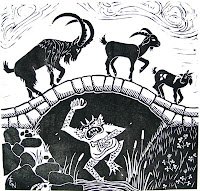Teaching Karate To Kids: The Golden Rule
It amazes me how many instructors just “don’t get it” when it comes to teaching young kids. So many try to teach our youngest students the SAME way as they teach adults and wonder why it doesn’t work, leaving both teacher and student frustrated.
How to break down and structure a kids’ class is outside the scope of this post, but I do want to share with you THE GOLDEN RULE. It’s really easy yet so many instructors miss it!
Here it is:
Make it fun!
I’m not saying to make it a mess around class without discipline, self control, focus or technique. And I’m not saying to let your kids run rampant and disrespect you or your dojo. All those traditional values that draw parents to bringing their kids to you in the first place must be present in whatever age group you’re teaching. However for small kids more than any other group it’s ALSO gotta be fun.
Here’s an example kids exercise taken directly from my 50 Kids Karate Games ebook based on “The Three Billy Goats Gruff” Story.
Be warned: Kids go crazy for this one, but at the same time it works on building great evasion and reaction skill sets.
The Troll Game
This is a group exercise in which you need a pool noodle or paddle to swing at the kids. You also need a few pads to make a “bridge” (explained below).
Students form a line in front of you. You play the roll of the “Troll”. As each student comes to the front of the line ask them, “Who crosses my bridge?”
At which point they must say their name (or some variation of it like “Jacob The Powerful!”).
At that point you swing the blocker at them and shout “Jump”, “Duck”, “Move” and “Punch” at which time they must perform the correct actions.
So for example you would call “Duck” as you swing the blocker at their head, “Jump” as you swing it at their feet, “Move” and they must get out of the way as you strike directly down at them, and “Punch” at which time they must make a counter punch and hit your blocker which you hold in front of your body.
If they are successful in defeating the Troll (that is they must avoid being hit and also finish with their counter punch), they may cross your bridge (which can be a bunch of kicking shields that you’ve laid out on the floor) before returning to the end of the line.
If they are not successful in defeating the Troll within 3 attempts, they must go to the end of the line without crossing the bridge.
Like I said above, this is a really simple exercise that karate kids love. As an instructor it’s also a good one because you still work on building skill sets and at the same time you’re making it fun for the kids. (For a full list of great kids karate games click here.)
Until next time, try it out and let me know how it works for you and your students.
– Jason


Steve Cowley
Great post Jason – for most people the whole ethos of teaching martial arts needs to change.
Yes, we do need to prepare people for violent encounters – but these are realitivly rare – certainly compared with times gone by. But the work we can do with character development and positive personal qualaties is massive.
Well taught martial arts are a brilliant vehicle for this – particularly with kids.
You are a great example to your trade – well done.
Steve Cowley (Professional Martial Arts Instructor for 25 years)
Jason Stanley
Thanks Steve,
I appreciate your comments.
Yes, we do need to prepare as you say, absolutely.
The the biggest problem I see is that many instructors are either too hard core with kids in which they frighten them with their "fear based" instruction, or they're too soft and let kids run all over them.
I tell my assistant instructors it's about having "friendly power". Maybe I'll write next week's post on this point… thanks for your help! hahaha
– Jason
Restita, Seattle Wushu Center
Great post! Yes, its true that we shouldn't teach kids like mini-grownups. I teach a lot of kids from the 3 to 7 year old range, and concepts such as sharing, taking turns, multiple command sequences, and teamwork can be difficult for very young ones to understand. Making classes fun with fun drills and games tend to make it a bit easier to "get it" when it comes to those concepts, especially "sharing". 🙂
Recently bought your "50 drills and games for kids" book…..awesome book! It gives me great ideas to expand upon for my kids classes. Thank you1
Jason Stanley
Hey Restita!
You're a braver person that I. I start my kids at 4 years… and that's just a guide. Heck, I've had 7 year olds that weren't ready. I can't imagine having a class full of 3 year olds.
Thanks for your post. And glad you like the book.
Warmest regards,
Jason